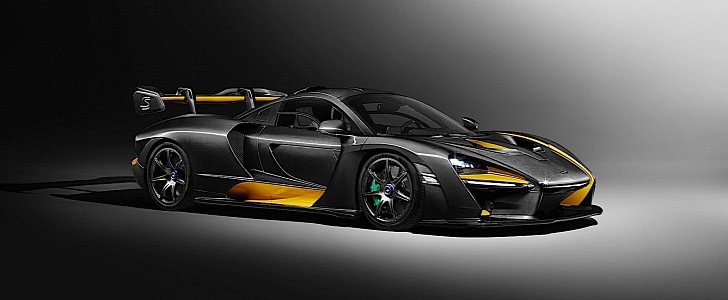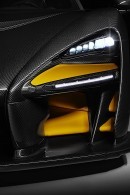Until the BP23 Hyper-GT shows with a higher top speed than the F1 of the 1990s, the Senna is the McLaren to have thanks to its unapologetic looks, neck-snapping performance, and emblematic name. But have you ever wondered what it would have been if the Senna had an electric powertrain instead of a 4.0-liter twin-turbo V8?
The Woking-based automaker did pose the question, and the answer isn’t to McLaren’s liking. Executive director of global sales and marketing, Jolyon Nash, is adamant “that’s not a McLaren." More to the point, "if the Senna was an EV, to deliver the same performance it would weigh 2,000 kilograms [make that 4,409 pounds].”
The lightest road-legal McLaren since the F1 tips the scales at 1,198 kilograms (2,641 pounds; dry), and that’s a bit of a difference when compared to the Senna EV. Speaking to Motor1, Nash made it clear that the automaker needs to understand how an electric vehicle “can possibly deliver a McLaren driving experience that’s visceral and true to its DNA.” The disadvantage in weight, however, is what keeps McLaren away from churning out an electric supercar or hypercar, at least for now.
“We’re running a project development prototype electric vehicle,” he told the motoring publication, but “with battery technology as it is today it can’t happen.” He and the engineers are right, for it all breaks down to two possible choices with the technology we have in this day and age.
Scenario one would be to focus on battery power for torque and performance, and scenario two would be the emphasis on driving range. You can’t have one without limiting the other, so that’ll be that.
Because each and every McLaren is fundamentally lightweight, Nash further reiterated that the automaker he represents isn’t going to do an SUV. Read what you will into that, but to our ears, this approach to supply and demand sounds like a middle finger shown to none other than Ferrari (for the F16X).
Even though all-electric and SUVs aren’t on the agenda, McLaren is investing a lot of money in hybrid technology. According to the Track22 roadmap, half of the vehicles produced by McLaren by 2022 will be hybridized in some way or another.
The lightest road-legal McLaren since the F1 tips the scales at 1,198 kilograms (2,641 pounds; dry), and that’s a bit of a difference when compared to the Senna EV. Speaking to Motor1, Nash made it clear that the automaker needs to understand how an electric vehicle “can possibly deliver a McLaren driving experience that’s visceral and true to its DNA.” The disadvantage in weight, however, is what keeps McLaren away from churning out an electric supercar or hypercar, at least for now.
“We’re running a project development prototype electric vehicle,” he told the motoring publication, but “with battery technology as it is today it can’t happen.” He and the engineers are right, for it all breaks down to two possible choices with the technology we have in this day and age.
Scenario one would be to focus on battery power for torque and performance, and scenario two would be the emphasis on driving range. You can’t have one without limiting the other, so that’ll be that.
Because each and every McLaren is fundamentally lightweight, Nash further reiterated that the automaker he represents isn’t going to do an SUV. Read what you will into that, but to our ears, this approach to supply and demand sounds like a middle finger shown to none other than Ferrari (for the F16X).
Even though all-electric and SUVs aren’t on the agenda, McLaren is investing a lot of money in hybrid technology. According to the Track22 roadmap, half of the vehicles produced by McLaren by 2022 will be hybridized in some way or another.














